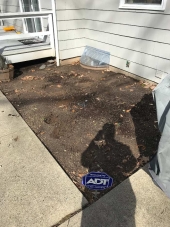




My Blog, Natural History and Forest Gardening
www.dzonoquaswhistle.blogspot.com
"Listen everybody, to what I gotta say, there's hope for tomorrow, if we wake up today!" Ted Nugent
"Suck Marrow" Henry D Thoreau




Brenda
Bloom where you are planted.
http://restfultrailsfoodforestgarden.blogspot.com/




My Blog, Natural History and Forest Gardening
www.dzonoquaswhistle.blogspot.com
"Listen everybody, to what I gotta say, there's hope for tomorrow, if we wake up today!" Ted Nugent
"Suck Marrow" Henry D Thoreau




Brenda
Bloom where you are planted.
http://restfultrailsfoodforestgarden.blogspot.com/




My books, movies, videos, podcasts, events ... the big collection of paul wheaton stuff!




[img]http://i109.photobucket.com/albums/n52/havlik1/permie%20pics2/permiepotrait3pdd.jpg[/img]
"One cannot help an involuntary process. The point is not to disturb it. - Dr. Michel Odent




Brenda
Bloom where you are planted.
http://restfultrailsfoodforestgarden.blogspot.com/




My Blog, Natural History and Forest Gardening
www.dzonoquaswhistle.blogspot.com
"Listen everybody, to what I gotta say, there's hope for tomorrow, if we wake up today!" Ted Nugent
"Suck Marrow" Henry D Thoreau








[img]http://i109.photobucket.com/albums/n52/havlik1/permie%20pics2/permiepotrait3pdd.jpg[/img]
"One cannot help an involuntary process. The point is not to disturb it. - Dr. Michel Odent




Brenda
Bloom where you are planted.
http://restfultrailsfoodforestgarden.blogspot.com/




Brenda
Bloom where you are planted.
http://restfultrailsfoodforestgarden.blogspot.com/








My books, movies, videos, podcasts, events ... the big collection of paul wheaton stuff!








My books, movies, videos, podcasts, events ... the big collection of paul wheaton stuff!




Kelowna, BC
Zone 5












Kelowna, BC
Zone 5








Kelowna, BC
Zone 5








Kelowna, BC
Zone 5

|
Heroic work plunger man. Please allow me to introduce you to this tiny ad:
heat your home with yard waste and cardboard
https://freeheat.info
|




